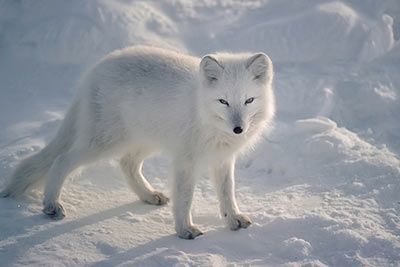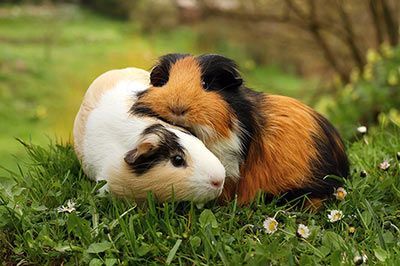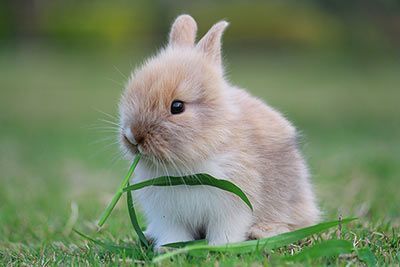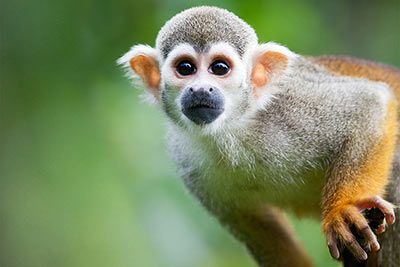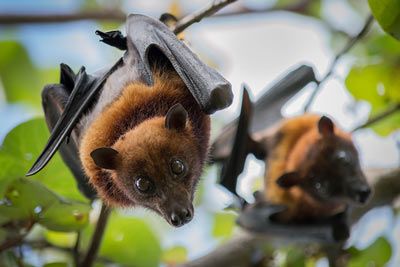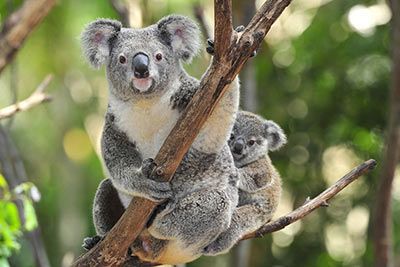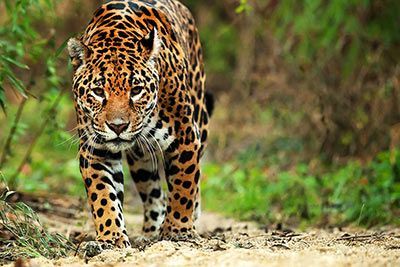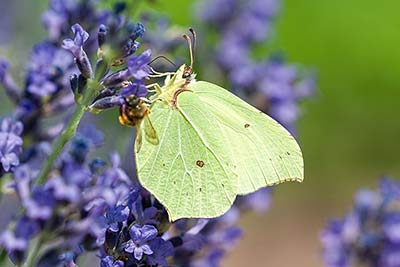Brown Bear
Brown Bear Facts
| Size | 40-110 in (100-280 cm) (body); 7.8 ft (2.4 m) (standing) |
| Speed | 31-34 mph (50-55 km/h) |
| Weight | 264-308 lb (120-140 kg) |
| Lifespan | 20-30 years |
| Food | Grass, herbs, roots, berries, salmon, lemmings, birds, rodents |
| Predators | Fleas, ticks, worms |
| Habitat | North America, Europe, Russia, Asia |
| Order | Carnivore |
| Family | Bears |
| Scientific name | Ursus arctos |
| Characteristics | Long claws |
Main Characteristics
Brown bears are predators. They primarily live in North America, Europe, Russia and Asia, and prefer semi-open landscapes such as tundras, prairies, coasts and mountains. Solitary animals, brown bears are active at twilight and night.
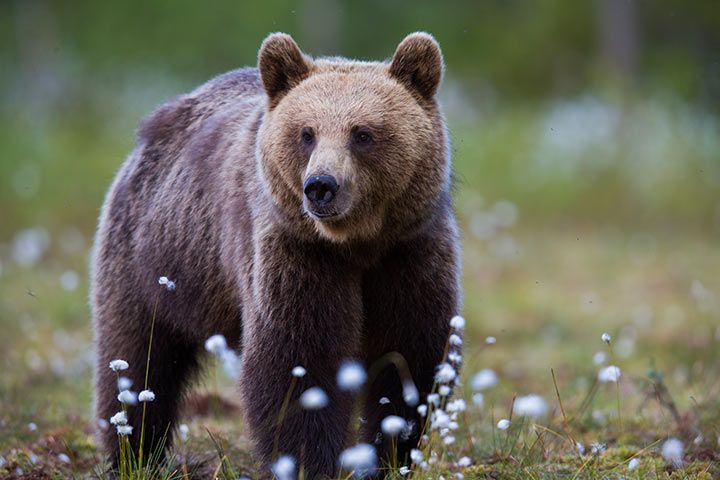
Bear Family
There are 12 different subspecies of brown bear. The most well-known brown bear is the north American grizzly bear. It’s stronger and heavier than the European brown bear. The Kodiak bear (also a brown bear) and the polar bear are the largest and heaviest bears in the world.
Brown Bear Species
There are eight species: American black bears, collar bears, brown bears, polar bears, sloth bears, sun bears, spectacled bears, and giant pandas. Despite their names, red panda bears and koala bears aren’t actually bears.
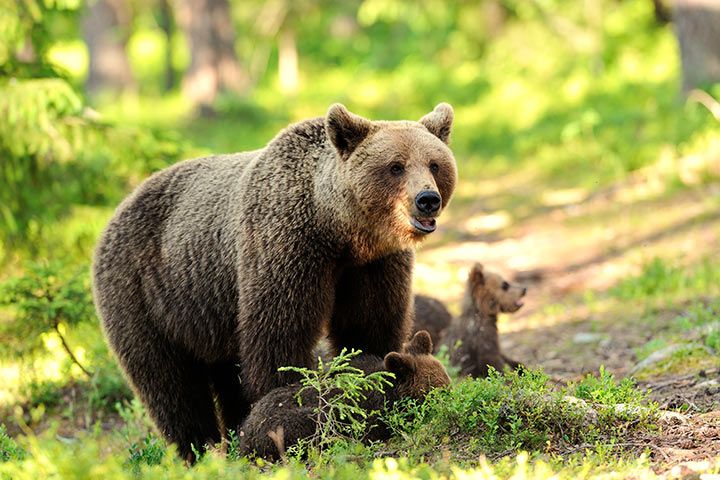
Diet
Brown bears may be predators but their diets aren’t full of meat. In actual fact, they mostly eat grasses, plants, roots, nuts, mushrooms and berries. They also hunt small insects, birds, small rodents and sick, weak or young moose, reindeer, deer and bucks. They only eat salmon in coastal regions.
Behavior
Are They Dangerous?
Bears are calm, gentle and social animals, but brown bears - and especially grizzly bears - are prone to attack, especially if a mother bear has cubs. Bears actually prefer to stay out of humans’ way. But their habitat is becoming smaller and smaller as houses and roads are being built, meaning that bears accidently happen upon humans while searching for food.
Do They Hibernate?
Before the icy cold winter months, bears gain 2 lb (1 kg) of body weight a day. This means they have enough reserves to rely on while they sleep, so they don’t need to find food in the snow. With plenty of time, they withdraw to a cozy hide-away padded with plants. During hibernation, they make use of their “extra padding”, losing 20-40% of their body weight.
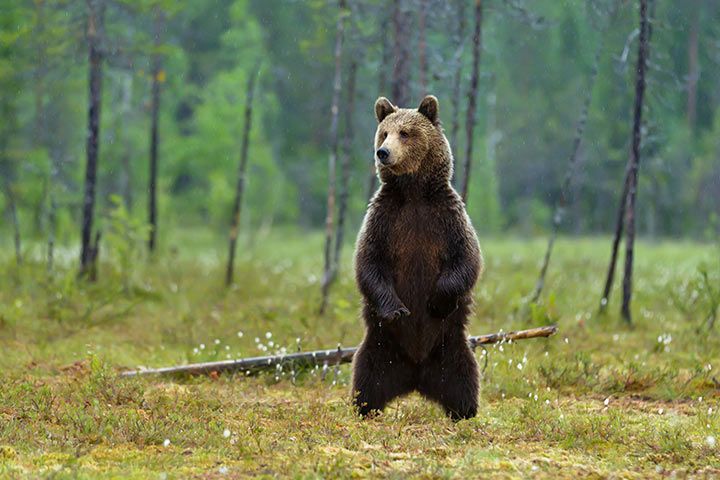
Enemies and Threats
Are They Endangered?
The European brown bear and grizzly bear are not endangered. Some brown bears have already died out, e.g. the Atlas bear, Californian and Mexican brown bears. The Himalayan brown bear is endangered.
Senses and Abilities
Sense of Smell and Hearing
The brown bear’s sense of smell is 100 times better than a human’s. They can hear very well.
Intelligence
Brown bears have good memories (they remember where food can be found) and can even count - like primates!
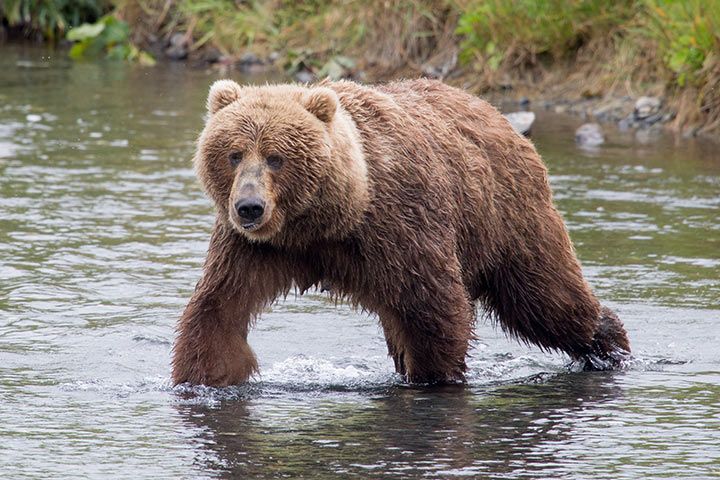
Importance for the Ecosystem
Brown bears eat fruit and nuts that are excreted along with their feces. This way, they spread seeds all around the place, planting new plants and trees. Bears also keep nature in balance as they get rid of sick, weak and young animals and pick the bodies of dead animals clean.













